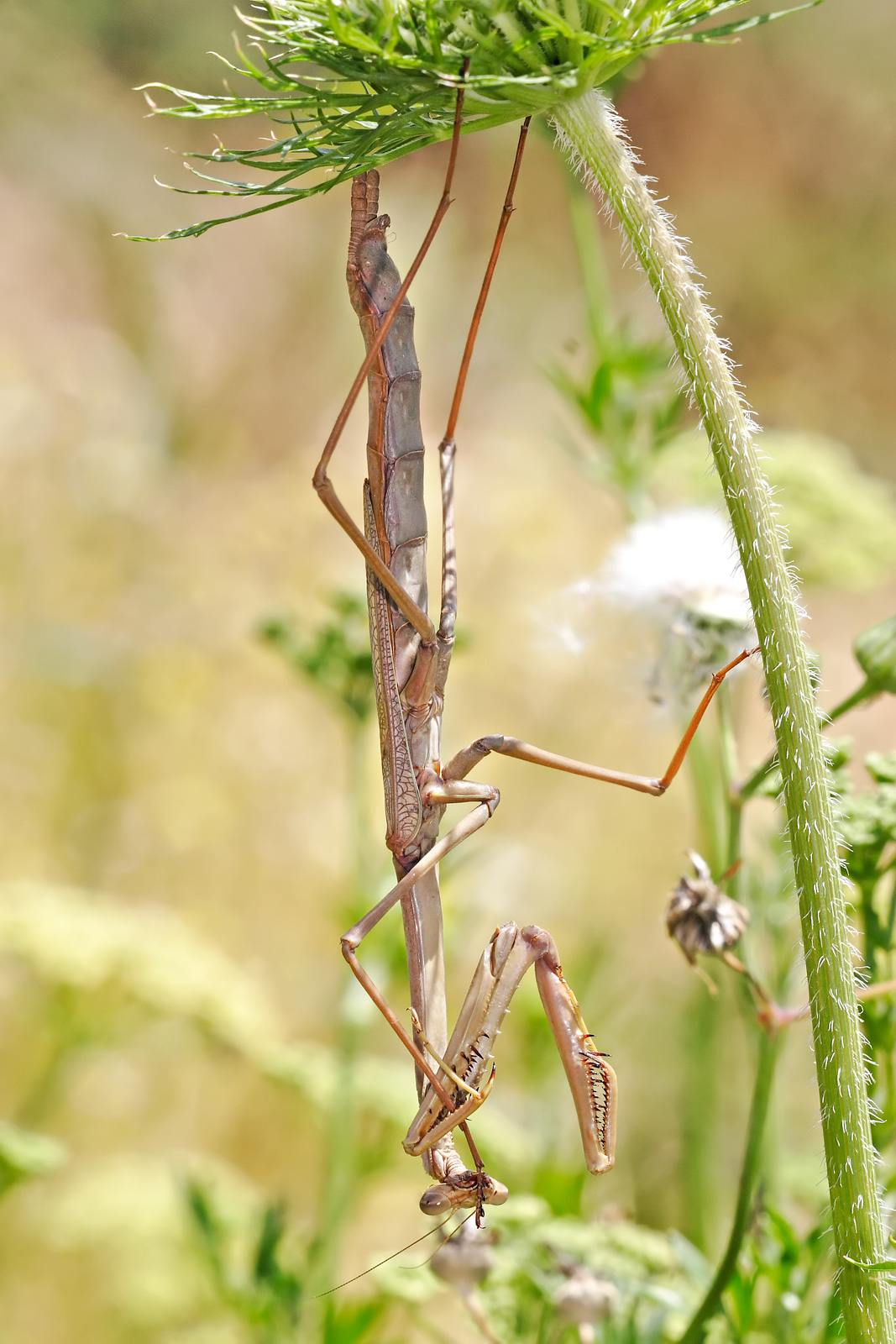- Archimantis latistyla
Taxobox
name = Large brown mantis

image_width = 250px
image_caption = "Archimantis latistyla" underneath acarrot flower
regnum =Animal ia
phylum =Arthropod a
classis =Insect a
superordo =Dictyoptera
ordo =Mantodea
familia =Mantidae
genus = "Archimantis "
species = "A. latistyla"
binomial = "Archimantis latistyla"
binomial_authority = (Serville, 1838)"Archimantis latistyla", commonly known as the large brown mantis (also known as the stick mantis or Australian mantis) is a species of mantid native to
Australia . The large brown mantis has a few subspecies, and one of them is the stick mantis ghost from Bundabergs Turtle Sands. The stick mantis ghosts are not as aggressive as the original species but have a defense display used to make the mantis appear larger by flinging its front legs into the air and putting its head down along with its antennae. Large brown mantids are light brown with short winged female and a long winged male. The subspecies from Bundaberg is a pale cream white with a yellow and black eye in between the arms (one and a half times the size of the original species).Behavior
These large brown mantids are aggressive as adults and are known to attack large prey, such as small birds, and rarely, fish, frogs, and lizards. The large brown mantids are cannibalistic and are known to attack humans if disturbed or not handled properly. They can also jump about a
meter from a perched spot to escape enemies.Reproduction
The
male stick mantis is smaller than the female and is about 99mm long and can fly; the female cannotfly and is about 110mm long.Reproduction occurs when the male injects a single sperm at a time and can last up to half an hour. When mating, the male ejaculates on the female with a miniature penis which is then inserted into a tiny opening at the female's posterior. The male clips its abdomen to the female's egg holding compartment and then the male inserts a single sperm at a time.Keeping a large brown mantid
Large brown mantids are not suitable for beginners and are only recommended for those with experience with the stick mantis. Keeping them is a tricky but pleasing experience because the female is
parthenogenic meaning the female can produce anootheca without the male, though in this case only females are produced.Things to avoid
*Never release two females in same the cage.
*Never over-bloat the female mantis.
*Never use fly spray around praying mantids.
*Never have mantids in the same enclosure.
*Never have a wide distributed ootheca in your enclosure.("footnote")*
Long winged andshort winged is the way some species of mantids develop. Thelarge brown mantisfemale is called "short winged" -- the pair of wings reach only half herabdomen and is not able tofly , but the long winged male has wings that cover the entire abdomen. The wings have four sets of wings and wing covers. The top set are the covers and the bottom wings enable the mantis to fly.External links
** [http://www.geocities.com/brisbane_hoppers/BrownMantids.htm Mantids on geocities.com]
** [http://www.ozanimals.com/Insect/Stick-Mantis/Archimantis/latistyla.html Mantids on ozanimals.com]Sources
** [http://zipcodezoo.com/Animals/A/Archimantis_brunneriana.asp The 10 species in the genus]
** [http://tolweb.org/Archimantis/12565 A. monstrosa]
** [http://www.treknature.com/gallery/Asia/India/photo157690.htm Latistyla]
** [http://lifeunseen.com/index2_item_3003.php Mantid devours flower wasp]
** [http://lifeunseen.com/index2_item_477.php Underside of male showing 6 segments]See also
**
Long & short winged -Brachypterous
**"Sphodropoda tristis "
**"Orthodera ministralis "
**"A. monstrosa "
**List of mantis genera and species References
Wikimedia Foundation. 2010.
